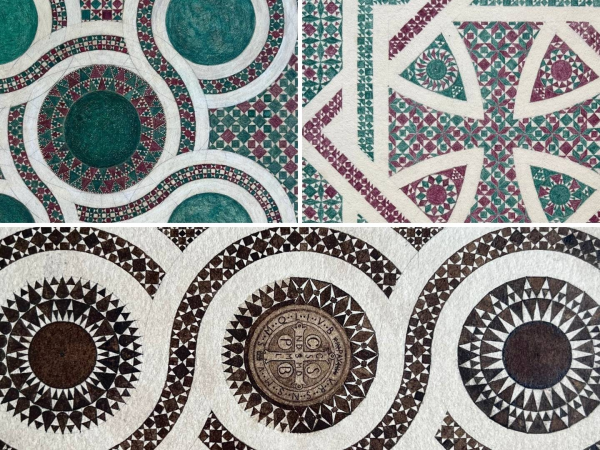Unravelling Cosmatesque Ornament
Encountering Cosmatesque ornamentation is like stepping into a visual riddle—an intricate tapestry of geometry. Found primarily in medieval Catholic churches in and around Rome, these mesmerising stone inlays evoke labyrinths, gardens, carpets and pilgrimage paths, all woven into a single surface.
With their roots in ancient Roman mosaics, Cosmatesque designs feature vibrant inlaid patterns of coloured stone and glass, meticulously cut into geometric forms. This course offers a practical approach to understanding and recreating these ornaments using compass and ruler. While unlocking the geometric principles behind their construction, it invites you to decode and ‘speak’ the language of the Cosmatesque.
Drawing from examples found in churches such as the Anagni Cathedral, San Clemente and San Benedetto in Piscinula in Rome, participants will:
• Learn to analyse and draw Cosmatesque patterns and their ornamental infills
• Explore the historical and symbolic context of these designs
• Develop practical skills for independent exploration and creative interpretation
Booking Options
Encountering Cosmatesque ornamentation is like stepping into a visual riddle—an intricate tapestry of geometry. Found primarily in medieval Catholic churches in and around Rome, these mesmerising stone inlays evoke labyrinths, gardens, carpets and pilgrimage paths, all woven into a single surface.
With their roots in ancient Roman mosaics, Cosmatesque designs feature vibrant inlaid patterns of coloured stone and glass, meticulously cut into geometric forms. This course offers a practical approach to understanding and recreating these ornaments using compass and ruler. While unlocking the geometric principles behind their construction, it invites you to decode and ‘speak’ the language of the Cosmatesque.
Drawing from examples found in churches such as the Anagni Cathedral, San Clemente and San Benedetto in Piscinula in Rome, participants will:
• Learn to analyse and draw Cosmatesque patterns and their ornamental infills
• Explore the historical and symbolic context of these designs
• Develop practical skills for independent exploration and creative interpretation


